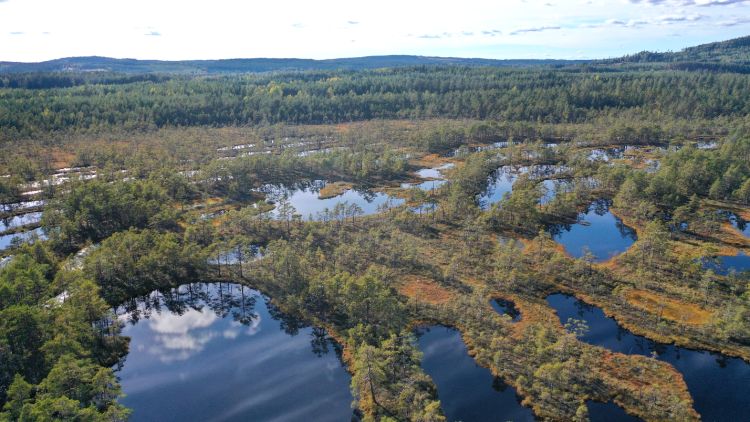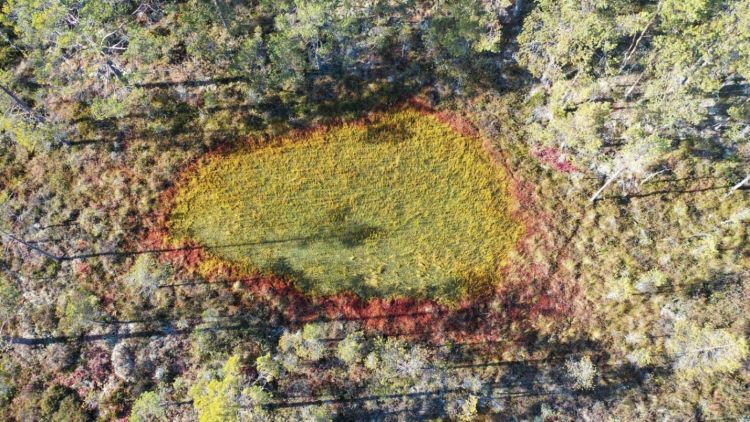Shrinking pools on northern peatlands

Peatlands are carbon-rich wetlands that are often covered in mazy patterns of open water pools, but some boreal peatlands in Scandinavia and elsewhere are beginning to lose their characteristic pools.
In the new paper, titled ‘Six Decades of Changes in Pool Characteristics on a Concentric-Patterned Raised Bog’, researchers used historical aerial imagery and a camera-drone survey to map changes in pools since the 1960s at Hammarmossen, a raised bog in Sweden.
The paper is authored by Daniel Colson, Paul Morris, Mark Smith, Håkan Rydin (Uppsala University), Gustaf Granath (Uppsala University) and Duncan Quincey.
Raised bogs are essential ecosystems
Northern peat bogs, like the one studied, are essential to the carbon cycle, storing around 600 billion tons of carbon. They are also home to important plants and wildlife.
However, peatlands and wetlands are vulnerable to climate change.
Understanding how northern peatlands change over several decades can help researchers to learn about the inner workings of these ecosystems and how they might change in the future.
Lead author, Daniel Colson, said: “Evidence from across the boreal zone and elsewhere is indicating that some of these ecosystems are losing open water area, in some cases rapidly.
“The potential loss of open-water pools on peatlands could have important consequences for greenhouse gas emissions, wildlife habitats, food chains and even human drinking water.”
Open water area fell by more than a quarter
The study measured the pools on the raised bog over 61 years, between 1961 and 2022.
Co-author, Dr Paul Morris, said: “Open-water pools at Hammarmossen reduced in area by 26.8% during the six decades covered by our imagery. This includes individual pools shrinking, as well as some pools even disappearing altogether.
“This loss of pool area isn’t a one-off, as we’re starting to see similar things happen to peatlands in other areas of Scandinavia, as well as in Ireland and Canada. However, pool loss has been particularly rapid at Hammarmossen and our results show that this trend is accelerating in recent decades.”
Effects of climate change
The researchers investigated what was causing the pools to shrink so quickly.
Co-author, Dr Mark Smith, said: "We found that the rapid loss of the pools was mainly due to open water being gradually overgrown by plants such as Sphagnum mosses and sedges. This overgrowth seems to be driven by climate change, as longer, warmer summers have helped the plants to grow more rapidly and colonise the water’s edges. In some cases, this has been enough for pools to become completely overgrown.”
Co-author, Professor Duncan Quincey, said: “Despite the new understanding that our study reveals, we need to look more deeply into how and why northern peatlands are changing in response to climate change and what the consequences of shrinking pools are likely to be for greenhouse gas emissions, habitat loss and water quality.”
Header image
Drone photography of Hammarmossen raised bog, Sweden, where researchers found that open water pools have been rapidly shrinking and disappearing over the last six decades, overgrown by mats of Sphagnum moss and sedges.





